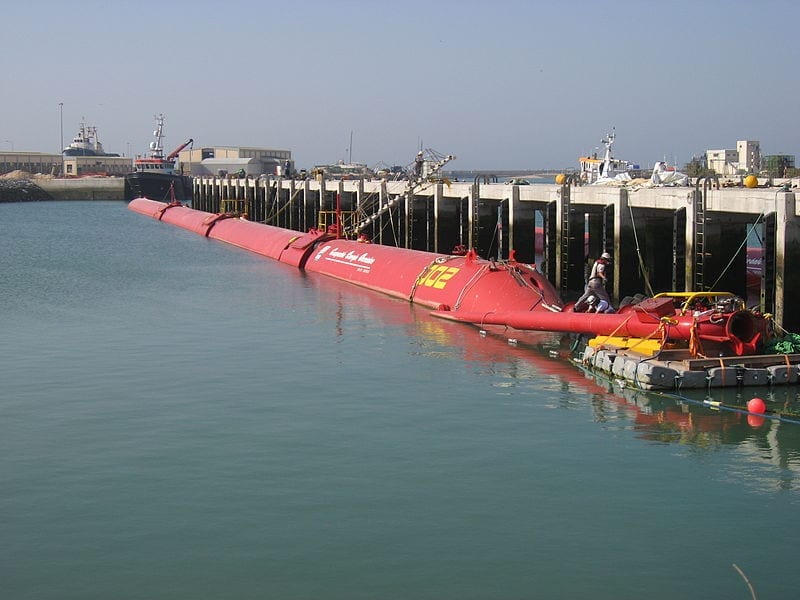
Liquid batteries, giant lasers, and vast new reserves of natural gas highlight the fundamental energy advances of the past 12 months.
With many renewable energy companies facing hard financial times (“Weeding Out Solar Companies“), a lot of the big energy news this year was coming out of Washington, DC, with massive federal stimulus funding for batteries and renewable energy and programs such as Energy Frontier Research Centers and Advanced Research Projects Agency-Energy (“A Year of Stimulus for High Tech“).
But there was still plenty of action outside the beltway, both in the United States and around the world. One of the most dramatic developments (“Natural Gas Changes the Energy Map“) was the rush to exploit a vast new resource; new drilling technologies have made it possible to economically recover natural gas from shale deposits scattered throughout the country, including in Texas and parts of New York, Pennsylvania, and Ohio. Advances in drilling technology have increased available natural gas by 39 percent, according to an estimate released in June. The relatively clean-burning fuel could cut greenhouse gas emissions by becoming a substitute for coal. Natural gas might even provide an alternative to petroleum in transportation, especially for buses and taxis–if only policymakers could take advantage of the new opportunity.
Meanwhile a number of technologies promise to cut down on emissions from coal plants. Feeding heat from the sun into coal plants could at once increase the amount of power that can be generated from a given amount of coal and reduce the cost of solar power (“Mixing Solar with Coal to Cut Costs“). And technology for capturing carbon dioxide (“Scrubbing CO2 Cheaply“) and storing it (“An Ocean Trap for Carbon Dioxide“) is finally emerging from the lab and small-scale projects into larger demonstrations at power plants, even while researchers explore potentially cheaper carbon-capture techniques (“Using Rust to Capture CO2 from Coal Plants“).
This year was also the year of the smart grid, as numerous test projects for improving the reliability of the grid and enabling the use of large amounts of renewable energy got underway (“Technology Overview: Intelligent Electricity“). The smart grid will be enabled by key advances, such as superconductors for high-energy transmission lines (“Superconductors to Wire a Smarter Grid“) and smart networks being developed by companies such as GE (“Q&A: Mark Little, Head of GE Global Research“).
The Latest on: Energy
[google_news title=”” keyword=”energy” num_posts=”10″ blurb_length=”0″ show_thumb=”left”]
via Google News
The Latest on: Energy
- 8 Keys to Maintaining Passion and Energy for Your Businesson April 28, 2024 at 6:43 am
4. Find a higher calling than cash. Happiness does not scale up with income. Studies show that doubling your income might increase happiness by 10 percent. In addition, focusing first on money will ...
- The Returns On Capital At Birchcliff Energy (TSE:BIR) Don't Inspire Confidenceon April 28, 2024 at 5:36 am
What underlying fundamental trends can indicate that a company might be in decline? More often than not, we'll see ...
- CMS Energy Corporation Just Beat EPS By 5.1%: Here's What Analysts Think Will Happen Nexton April 28, 2024 at 5:12 am
After the latest results, the twelve analysts covering CMS Energy are now predicting revenues of US$8.32b in 2024. If met, this would reflect a decent 13% improvement in revenue compared to the last ...
- Russia targets Ukrainian energy sector in latest round of attackson April 27, 2024 at 12:42 pm
Russia has launched missiles toward Ukraine in attacks that appear to be targeting the country’s energy sector, officials said. Ukraine’s air force said Saturday that Russia launched 34 missiles and ...
- The meteoric rise and stunning fall of Prime, Logan Paul’s energy drink that was once resold for almost $1,500 a can: ‘A brand cannot live on hype alone’on April 27, 2024 at 6:09 am
Status-obsessed Gen Alpha build up brands just to knock them down, and influencer-led companies like Prime are starting to feel the heat.
- Russia Hits Ukrainian Energy Sites In Massive Attackon April 27, 2024 at 6:07 am
Russia launched a massive missile strike at Ukraine overnight, damaging four power plants in the latest barrage targeting the country's energy supply, officials in Kyiv said on Saturday.
- Energy & Utilities Roundup: Market Talkon April 26, 2024 at 1:21 pm
The latest Market Talks covering Energy and Utilities.
- 6,000-acre solar energy and storage facility opens near Buckeyeon April 26, 2024 at 6:01 am
A 6,000-acre solar energy and storage facility is now operational in the far West Valley near Buckeye. Here's what to know.
- US energy giant sounds alarm on Biden's climate rules targeting power plantson April 25, 2024 at 2:17 pm
One of the nation's largest energy companies, which provides power to more than eight million customers, said President Biden's environmental regulations will threaten the grid.
via Bing News









